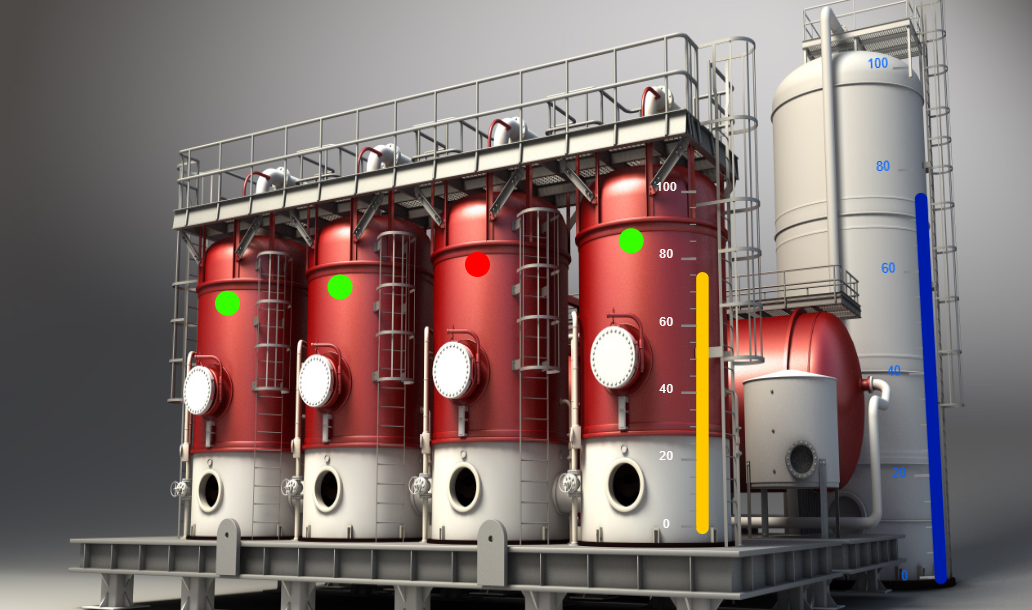What Is the Relationship Between HMI and SCADA?
What Is the Relationship Between HMI and SCADA?
The relationship between HMI (Human-Machine Interface) and SCADA (Supervisory Control and Data Acquisition) plays a critical role in the realm of industrial automation. It is an essential and indispensable connection that enables seamless communication and control between humans and machines, ensuring optimal efficiency, productivity, and safety in industrial processes. The integration of HMI and SCADA empowers operators with real-time data visualization, intuitive interfaces, and comprehensive control capabilities to monitor and manage complex systems with utmost precision. This symbiotic relationship serves as the backbone of modern industrial automation, driving innovation, streamlining operations, and maximizing overall performance.
SCADA Systems
SCADA systems unquestionably play an absolutely crucial role as the centralized control system in industries such as manufacturing, energy, and transportation. They assertively monitor and regulate a wide range of processes with utmost precision, guaranteeing not only efficient operations but also unparalleled optimal performance. With their advanced capabilities, these systems leave no room for errors or inefficiencies, providing a robust foundation for industrial operations. With their unparalleled advanced capabilities, these cutting-edge systems not only provide real-time data but also enable remote monitoring and control, revolutionizing the way industrial operations are conducted. By seamlessly integrating with industrial processes, SCADA systems enhance overall productivity and efficiency to unprecedented levels while maintaining an unwavering commitment to upholding the highest standards of security. It is beyond dispute that SCADA systems have unequivocally become indispensable tools in modern industrial settings. These powerful SCADA systems excel in collecting vast amounts of data from remote devices, meticulously analyzing every detail, and effortlessly providing real-time information to operators. This invaluable data-driven insight empowers operators with the necessary tools for quick and informed decision-making, enhancing productivity and efficiency in the process.
HMIs
On the other hand, it is imperative to note that Human-Machine Interface (HMI) plays a crucial role as the robust and indispensable interface between operators and the Supervisory Control and Data Acquisition (SCADA) system. It serves as the primary means of interaction for operators, enabling them to efficiently monitor, control, and manage various processes within the SCADA system with ease. The remarkable functionality of this system enables users to seamlessly interact with the SCADA system through highly intuitive visual displays, precisely triggered alarms, and robust controls. This allows for a streamlined user experience, empowering operators to effortlessly monitor and manage critical operations with utmost efficiency and precision. The Human Machine Interface (HMI) is a truly powerful tool that goes beyond simply presenting data. It goes above and beyond to provide operators with an exceptionally user-friendly format, allowing them to effortlessly monitor processes with unparalleled efficiency. With the HMI at their disposal, operators can confidently make necessary adjustments with absolute precision, taking control of operations like never before.
SCADA Architecture
When it comes to architecture, SCADA systems boast a highly structured framework that unequivocally consists of four indispensable components. These components serve as the robust backbone of SCADA systems, ensuring their seamless functionality and utmost reliability. They include robust sensors or remote terminal units (RTUs) that efficiently collect data, reliable programmable logic controllers (PLCs) that handle data processing, resilient communication networks that ensure smooth and secure data transmission, and finally, a central host or server that serves as the control center for all system operations.

Types of SCADA
Allow me to enlighten you about the three fundamental types of SCADA systems, each serving a unique purpose. Firstly, we have the highly efficient local SCADA systems, meticulously designed to flawlessly cater to small-scale operations within a single facility. These systems boast exceptional precision and effectiveness in managing and monitoring localized processes, ensuring seamless operations and enhanced productivity. These exceptional systems are absolutely perfect for ensuring the utmost efficiency in control and monitoring within any confined environment. They go above and beyond to deliver unparalleled performance and reliability. And let's not forget about the distributed SCADA systems, which take things to an entirely new level of awesomeness. These game-changing systems revolutionize control and monitoring by offering expanded capabilities, enhanced scalability, and seamless integration with existing infrastructure. With them in place, you can rest assured that your operations will reach peak performance levels while maintaining optimal security measures. These incredibly powerful systems have the capability to seamlessly connect multiple sites across extensive geographical areas, enabling centralized control and efficient real-time data management. With the implementation of distributed SCADA systems, you can effortlessly monitor and manage operations across various locations with utmost ease and precision.
The streamlined connectivity and comprehensive control offered by these advanced systems make them an indispensable tool for modern businesses operating in geographically dispersed environments. Lastly, it is important to highlight the remarkable cutting-edge cloud-based SCADA systems that harness the immense potential of cloud computing technology for seamless data storage and analysis. These revolutionary systems offer an unparalleled level of scalability, ensuring that your SCADA infrastructure can effortlessly handle increasing volumes of data without compromising on performance. Moreover, they provide rock-solid security measures, safeguarding your sensitive information from any potential threats. In addition to this, these state-of-the-art systems offer unparalleled flexibility in managing your SCADA infrastructure by allowing you to easily access and manipulate data from anywhere at any time, empowering you with complete control over your operations. It is absolutely crucial to thoroughly understand and appreciate these vital distinctions, as each type of SCADA system brings a plethora of unique advantages that can undeniably and profoundly benefit the operations of your esteemed organization. By comprehending these distinctions with utmost clarity, you will be empowered to make informed decisions that will undoubtedly propel your organization towards unprecedented levels of operational excellence.
SCADA System Applications
SCADA system applications have proven to be highly effective in a wide range of industries. These include but are certainly not limited to monitoring oil pipelines for potential leaks, exercising control over water treatment plants to ensure optimal operation, managing power distribution grids for efficient and reliable electricity supply, and overseeing manufacturing processes within factories to streamline operations and enhance productivity.
For a more comprehensive understanding of the intricate relationship between Human Machine Interface (HMI) and Supervisory Control and Data Acquisition (SCADA) systems, it is highly recommended to refer to authoritative resources that provide in-depth insights. To ensure accuracy and reliability, it is advisable to consult reputable sources such as PDF documents offered by well-established institutions or industry-leading organizations.
You might also like



